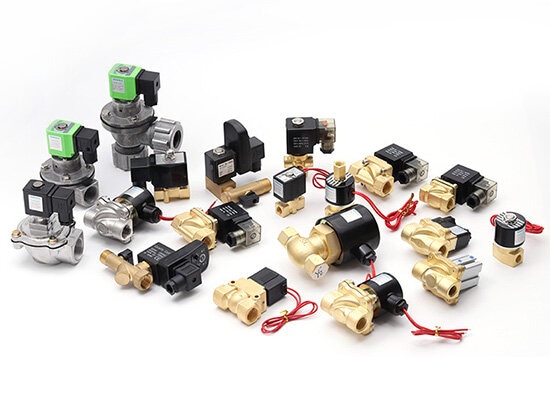- sales@fokca.com info@fokca.com
- WhatsApp: +86 150 5749 1870

Solenoid valves are electromechanical devices used to control the flow of liquids or gases. These valves operate by using an electric current to create a magnetic field, which in turn actuates a plunger mechanism to open or close the valve. They are widely used in industrial, automotive, and household applications.
A solenoid valve consists of a coil, a plunger, and a valve body. When an electric current passes through the coil,
it generates a magnetic field that attracts the plunger, causing the valve to either open or close, depending on its design.
When the current stops, a spring mechanism returns the plunger to its original position.
◆ Direct-acting Solenoid Valves: These valves operate directly without the need for external pressure. They are typically used in low-flow applications.
◆ Pilot-operated Solenoid Valves: These valves use a small solenoid to control a larger diaphragm, allowing for the regulation of high-pressure fluids.
◆ Two-way Solenoid Valves: These valves have one inlet and one outlet and are used to either permit or block flow.
◆ Three-way Solenoid Valves: These have three ports and are used for diverting or mixing flows.
◆ Four-way Solenoid Valves: Typically found in pneumatic applications, these valves control the flow of air to actuators.
◆ Industrial Automation: Used in manufacturing processes to control the flow of liquids and gases.
◆ Automotive Systems: Found in fuel injection systems, air conditioning, and transmission control.
◆ Medical Equipment: Used in devices such as oxygen delivery systems and dialysis machines.
◆ Household Appliances: Found in washing machines, dishwashers, and irrigation systems.
◆ Fast Response Time: Solenoid valves operate almost instantaneously upon electrical activation.
◆ Energy Efficient: They consume power only when activated.
◆ Compact and Reliable: These valves have a small footprint and a long operational lifespan.
◆ Versatile: Suitable for various fluids, pressures, and temperature ranges.
If you want to learn more, please visit our sub-site: https://www.fokcavalve.com/.
Links: www.fescolo.com(Pneumatic)
FOKCA ©1998-2025 All Rights Reserved Sitemap